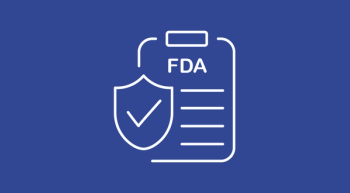
- December 2013
- Volume 7
- Issue 9
Provenge Treatment Team Supports Patients Every Step of the Way
The FDA's approval in 2010 of sipuleucel-T (Provenge) marked a milestone in the treatment of men with advanced prostate cancer and ushered in an exciting new immunotherapeutic treatment approach.
Maria Webster
The FDA’s approval in 2010 of sipuleucel-T (Provenge) marked a milestone in the treatment of men with advanced prostate cancer and ushered in an exciting new immunotherapeutic treatment approach.
The therapy’s complex, multistage process also created a challenge for oncology practitioners charged with administering it—one that clinicians at Chesapeake Urology have embraced with the opening this May of a dedicated Infusion Therapy Center located on the campus of the Greater Baltimore Medical Center in Maryland. The center has become a “go-to” resource for other providers looking for guidance on the Provenge process.
Preparing the Patient
The center’s infusion therapy team includes a manager and three nurses, as well as physicians who are present during all infusions. Once a physician has identified a patient as a candidate for the treatment, Center Manager Maria Webster takes great care to educate and reassure the individual via the 90-minute consultation she conducts with each patient. These sessions cover everything from the manufacturing process and calcium and iron intake issues, to facilitating helpful patient supports, such as putting the patient and his or her family caregiver in touch with others who have already gone through the process.
How Sipuleucel-T Works:
- Provenge is indicated for the treatment of asymptomatic or minimally symptomatic prostate cancer that has spread to other parts of the body and is resistant to standard hormone treatment.
- A patient’s immune cells are extracted (apheresis) and sent to a manufacturing facility during the first step of the process.
- The immune cells are then cultured with a recombinant antigen to create the anticancer vaccine.
- In the final stage, the patient’s own cells are returned to the patient intravenously to treat the prostate cancer.
- Treatment duration is 3 weeks for patients with centralline administration and 5 weeks when administered peripherally.
- Common side effects include fatigue and flulike symptoms, typically resolving within 48 hours of treatment.
“This is a tremendous help to the patient,” Webster emphasized. “You want to set the patient up from the time you see them. When I get them, they are scared. When we’re done, they’re educated. They’re aware. There’s a sense of, ‘I’m going to be okay.’ They come confused and fearful of the unknown, and they leave with hope.” Webster added that she often has the consultations with patients after business hours, so they can tour the facility and see where they will be receiving their treatments. Patients also receive a large folder that includes an informational CD, links to YouTube videos, and other patient and caregiver resources.
In addition to patient education, Barbara Reinard, RN, an infusion therapy nurse at the center, stressed the need to determine any comorbid conditions prior to starting therapy, such as heart problems or kidney disease. Those issues, in particular, are critical because of fluid volume associated with the treatment process, she explained. Venous access is also very important, because patients require two good injection sites if they are deemed able to undergo the process peripherally: one for the withdrawal and one for return. For patients who do not have this access due to advanced age or other reasons, a central line is placed.
Barbara Reinard, RN
Webster added that American Red Cross centers perform the apheresis withdrawals and provide second opinions on venous access at no charge. “When we do utilize the central lines, we try to make the process as streamlined as possible,” she continued. The line is inserted the day before the first withdrawal and removed the day of the last infusion.
She noted that for patients using the central line route of administration, treatments are done back-to-back over 3 weeks to reduce the chances of infection. She said that her team has found that this approach has worked out well, and staff have now made it part of their protocol. For patients receiving treatment peripherally, the process occurs every other week, finishing in week 5.
Understanding the patient’s family/caregiver support system is also essential, Reinard noted, to help patients manage the many aspects of the treatment process, including premedication and transportation home from the clinic.
transportation home from the clinic. The care team makes sure to educate patients about the more commonly occurring side effects they may experience, such as fatigue, chills, and body aches. Patients are instructed to monitor their temperature using a digital thermometer, to keep a diary of the readings, and to contact their urologist using the on-call Patient Access Center (PAC) if a reading reaches 101ËšF (101.4ËšF for central-line patients).
Coordination Is Key
Coordinating delivery of the product represents another important challenge, involving a multistep “chain-of-custody” process to ensure that the right product gets to the right patient.
Before the product gets infused, two RNs check expiration dates, ensure all codes and numbers match up, and verify the patient’s ID. Again, patients are educated about this process up front, so that they know what to expect. Webster emphasized that communication occurs between the team members, with the physicians, and with the Red Cross, so that if any issues arise, everyone is aware. Every patient has Webster’s cell phone number, as well as the PAC telephone number. Each time patients are treated at the center, they leave with a written instruction sheet that the nurses review with them.
“You develop a relationship with each patient,” said Webster. “We’re not just educating patients about Provenge. We’re telling them about how 10 years ago, the only thing we had to fight this disease was chemotherapy—you feel terrible, you lose your appetite. With this therapy, you’re using your own defense system to attack this disease.”
At the time of our interview, Webster said she would soon be headed out to California to assist another practice in setting up its own infusion therapy center. She understands the importance of getting the word out about how a model like theirs can improve both the care and prognosis for patients with prostate cancer. “We are always there to educate and support our peers with tools to provide positive outcomes for their patients.”
Articles in this issue
almost 12 years ago
Aldoxorubicin More Effective Than Doxorubicin in STSalmost 12 years ago
PARP Inhibitors Reemerge as Treatment for Serous Ovarian Canceralmost 12 years ago
ALK-Positive Criteria for Determining Crizotinib Use May Fall Shortalmost 12 years ago
Subgroup Analyses Show Depth of Everolimus Benefit in BOLERO-2almost 12 years ago
Stem Cell Transplantation May Impair Sexual Healthalmost 12 years ago
Analysis Finds Cancer Care Coordination Increases Patient Satisfactionalmost 12 years ago
Standardizing Palliative Care Referrals and Distress Assessmentalmost 12 years ago
Evidence-Based Guidelines Needed for Immunotherapy-Related Adverse Eventsalmost 12 years ago
Preventing and Managing Treatment-Related LymphedemaNewsletter
Knowledge is power. Don’t miss the most recent breakthroughs in cancer care.




















































































